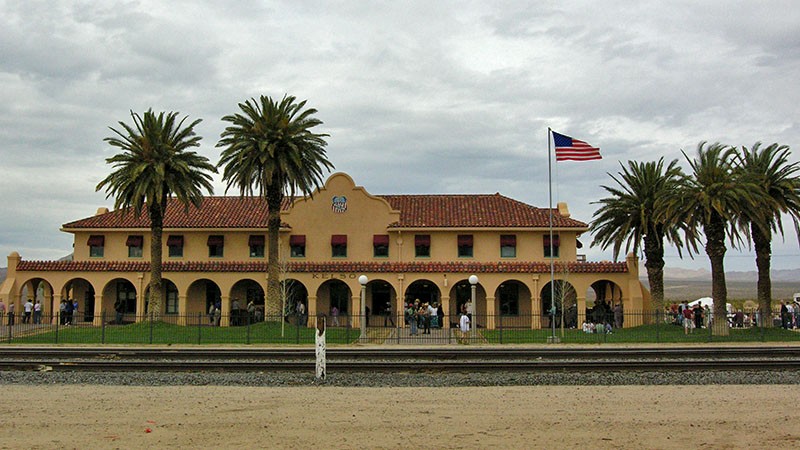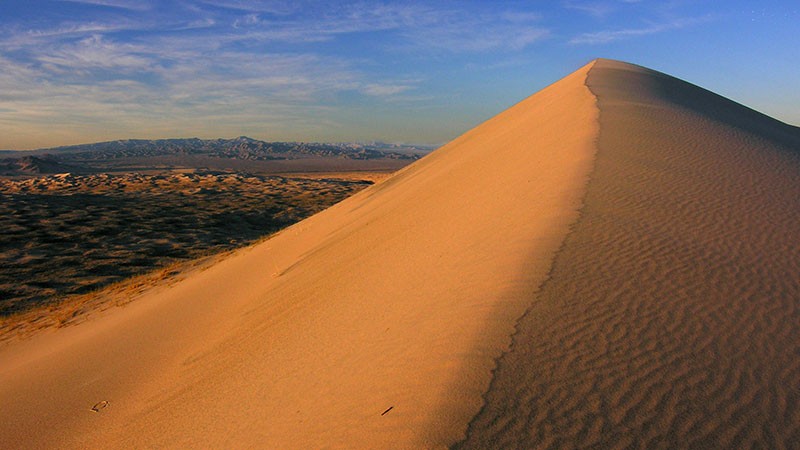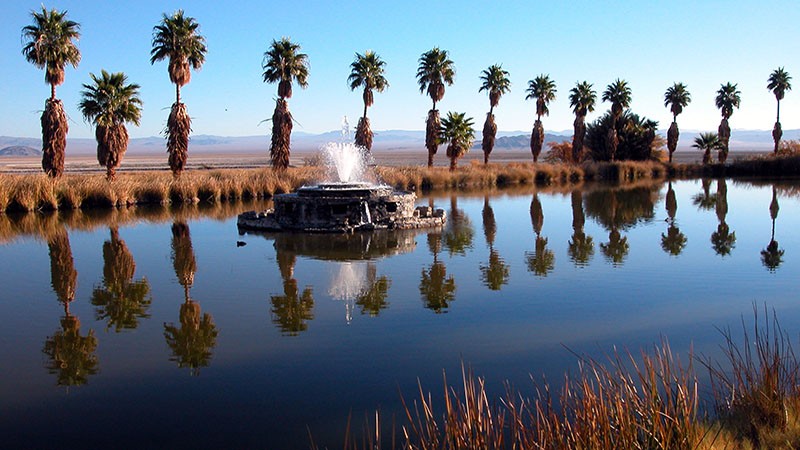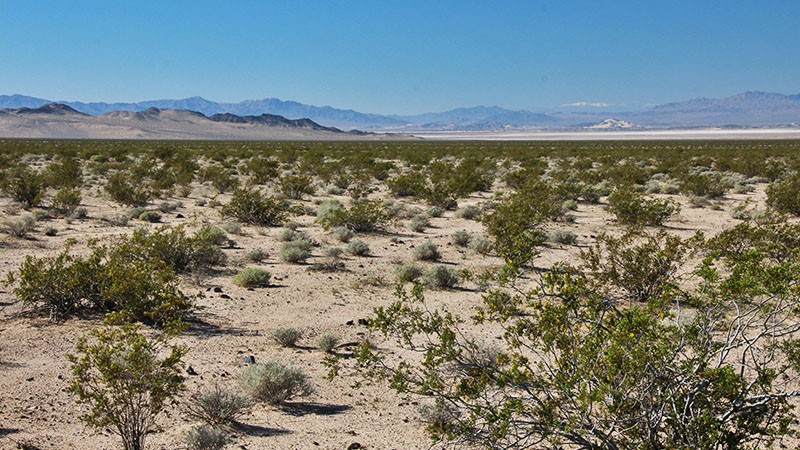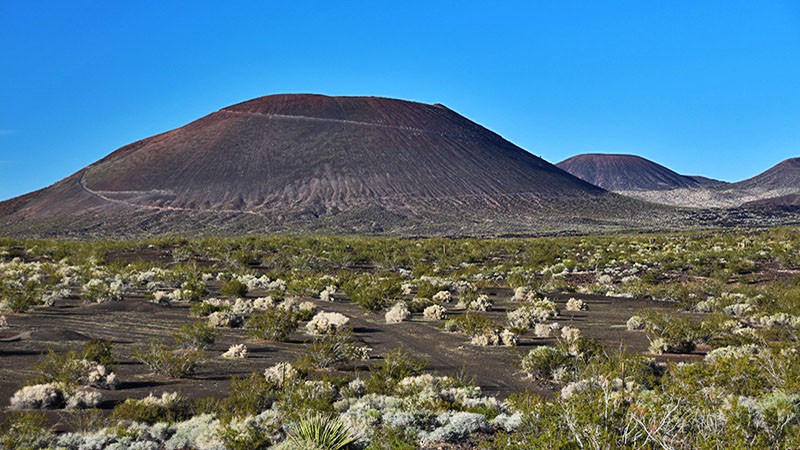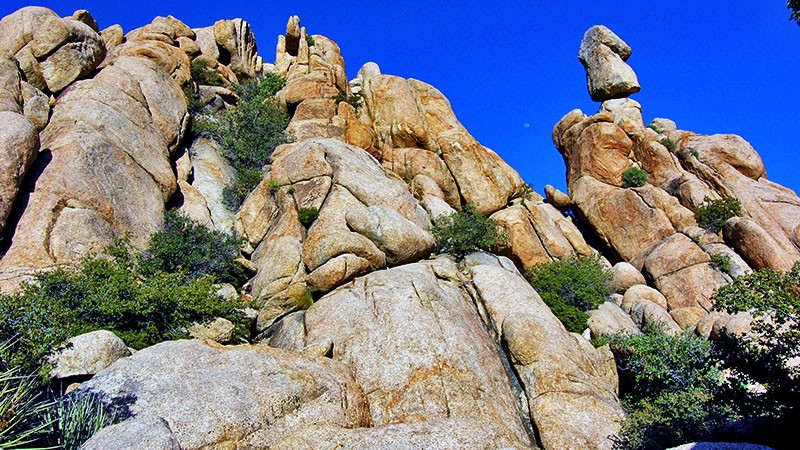Mojave National Preserve
The Mojave National Preserve is one of the newest units of the National Park Service and within its boundaries represents much of the fine qualities of the Mojave Desert. This article, along with our Virtual Tour below, will give you a brief overview of some of the sites to see in the Preserve and where they can be found.
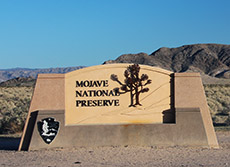

The Mojave National Preserve (MNP) was formed in 1994 by what is known as the Desert Protection Act. At approximately 1.6 million acres, it is currently the third largest unit of the National Park Service within the contiguous United States (right behind Death Valley and Yellowstone). It is roughly located between the I-15 and I-40 with the western edges starting roughly near Baker (north) and Ludlow (south) and extending to the Nevada/Arizona border.
There is a lot to explore in this large area and we hope that this article will spark your interest to learn more about it and take a trip (or several trips) out there to experience it for yourself. In addition to the vast amount of open, unspoiled desert landscapes, the Preserve has many unique things to see. It is a very special place.
Our accompanying YouTube virtual video tour gives you a glimpse of what those things look like and where they are located. Even better is our compressive Virtual Tour Guide that gives you plenty of details on all the places you’ll want to visit. Once you see all that the Preserve has to offer, you’ll want to go back again and again.
Why was the Preserve created? The whole purpose of creating the Preserve was to protect and save a region of the unique Mojave Desert environment. The Mojave Desert covers a huge area of land and much of the western part of it had been permanently altered by commercial and military development. The almost untouched “East Mojave” still had most of the diverse flora and fauna specific to the Mojave Desert so it seemed logical to preserve this piece.
Good thing that decision was made because, in 2013, National Geographic Magazine rated the Mojave Desert as one of the top 100 places to visit in the world. Now, San Bernardino County has a world-renowned natural area that can be enjoyed for generations to come.
What is a National Preserve? It is a bit confusing as to why the MNP is a National “Preserve” instead of a National “Park” but there is a clear distinction between the two. All land inside of a National Park has to belong to the National Park system. It cannot be privately owned nor is there any hunting or mining allowed. When the Preserve was created, there were still many privately owned parcels of land within its boundaries. There were also active mining claims and hunting was allowed. Over time, these parcels are being purchased by the Park Service (as they become available and the Park Service can afford them) but the status of the Preserve cannot change until there is no more privately owned land, nor any mining or hunting interests.
More…
Pictures
Below are some pictures of what you will see along the way.
When is a good time to go? The Preserve is a great place to visit almost any time of year thanks to the diversity of elevations. You can visit different parts of the Preserve at different times of the year. Naturally, the lower elevations, such as Zzyzx, the cinder cones and Kelso Dunes, are great to visit during the winter but not past April or before September because of extreme desert heat. The higher elevations, such as the canyons of the New York Mountains or even Hole-In-The-Wall, can be visited up until mid-June. And in the winter, the Preserve gets snow – just like us. To see the Joshua Trees covered in snow is breathtaking!
Springtime, typically between March and April, is an ideal time to visit the Preserve because of the increased chance of seeing wildflower blooms. Realize however, that wildflower blooms are dependent upon rainfall and they will continually move up in elevation as spring turns to summer. February and March is a good time to look for flowers in lower elevations, whereas many cacti and yuccas bloom in May and June above 5,000 feet.
What is there to see in the Preserve? There is a lot of wide open space and classic Mojave Desert scenery to see throughout the MNP. There are lots of dirt roads and places to hike. There are also plenty of unique things to see like cinder cones, abandoned mines, petroglyphs, diverse flora and much more. Although you might think you see a lot of the MNP while traveling on I-15 or I-40, there are so many hidden gems that you can only get to by getting off the freeways and onto the back roads.
Many of the highlights of the MNP can be accessed with an ordinary vehicle via a paved or easy dirt road. One of these places is the beautifully restored Kelso Depot which is also the MNP’s main Visitor Center. There is also a small Visitor Center at the MNP headquarters in Barstow. It’s always a good idea to stop in at a Visitor Center before exploring an area. Other places that you can get to with an ordinary vehicle are the Kelso Dunes, Hole-in-the-Wall, Mitchell Caverns, Rock Spring, Teutonia Peak hiking trail and Zzyzx.
What kind of vehicle do I need? The best travel tool for seeing the MNP is an SUV or truck. You don’t necessarily need 4WD but having it will expand your trip options. Having that high-clearance will give you access to the many dirt roads across the MNP that lead to places like the cinder cone field, Cow Cove petroglyphs, Caruthers Canyon, historic mines of the Ivanpah Mountains, the Mojave Road and many other places.
One easy introductory road trip through the MNP is via Kelbaker Road. It stretches through the Preserve, connecting the I-15 and I-40 freeways, and passes by the cinder cones and Kelso Depot. Another easy road trip is via Cima Road off the I-15. It passes through the largest Joshua tree forest in the world and goes past the Mojave Cross (which has been in the news the past few years). Look for a future article from us on this road trip.
Would you like to visit the Mojave National Preserve?
Check out our comprehensive travel guide on the Preserve. Use it to plan your visit by learning and seeing what there is to see at each corner of the Preserve.
Learn more at: http://www.backroadswest.com/brw/mojave-national-preserve/
Support Us
Help us fill up our tank with gas for our next trip by donating $5 and we’ll bring you back more quality virtual tours of our trips!
Your credit card payment is safe and easy using PayPal. Click the [Donate] button to get started:

